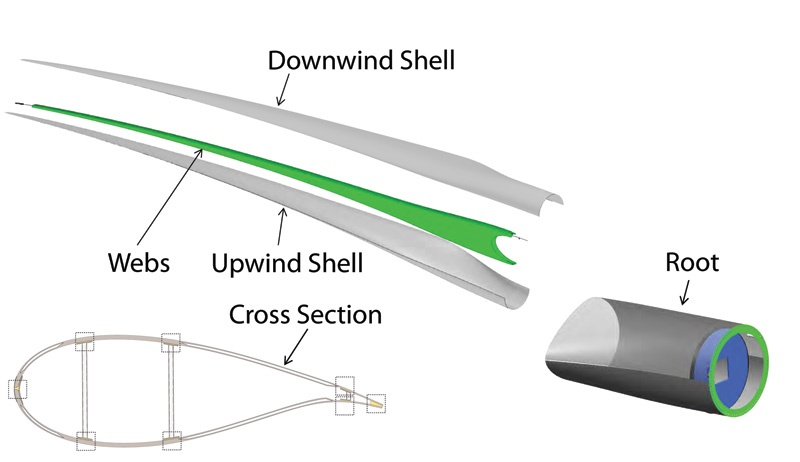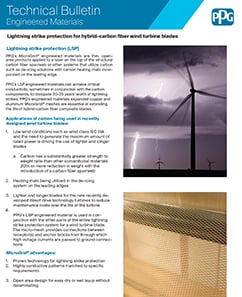As power output requirements increase for wind turbines, wind generator manufacturers are moving towards larger blades to rotate these larger turbines at lower wind speeds. As the wind blades increase to over 45 meters in length, blade construction is moving away from the more traditional all fiberglass construction to utilize more carbon fiber. The carbon fiber provides substantial weight savings and increased strength to combat the extreme stress loads exerted on the blades during operation. Carbon fiber, however, is conductive and more prone to be struck by lightning, but not conductive enough to channel the energy out of the blade. Without proper protection, they are susceptible to severe lightning strike damage and catastrophic failure.
For two decades, Dexmet has worked with aircraft designers developing precision expanded MicroGrid® foils for lightning strike protection on carbon fiber composite aircraft. Wind Blade Manufacturers are also realizing the importance of having the proper lightning strike protection for larger carbon fiber blades and incorporating Dexmet’s precision expanded MicroGrid® materials into their designs. Dexmet MicroGrid® materials are thin, open area products applied to the top adhesive layer of the composite and are capable of achieving the critical conductivity required to dissipate a destructive lightning strike, protecting the carbon fiber layer below. Dexmet’s expanded copper and aluminum MicroGrid meshes are essential for extending the life of carbon fiber composite blades. In addition to protecting blades, expanded materials can also be incorporated into the composite turbine nacelles for additional lightning strike protection.
Lightning protection materials are available in either copper or aluminum in a wide range of configurations to minimize weight while maximizing conductivity across a wide blade surface

Tested to IEC64100 Specification
Configured to withstand multiple lighting strikes of the blade surface. Effective down conductor material
Ensures no structural damage to the composite materials below, making for lower downtime and more economical repairs

With all rotary blades, lighting is more prone to hit the leading edge and the outer blade surfaces towards the tips where the highest amount of static energy is generated. For these locations, heavier, more conductive materials are utilized.
As you move towards the root of the blade, a lighter weight material can be incorporated to reduce weight and cost. The variability with Dexmet’s expanding process provides the capability of producing a custom material based on desired weight, conductivity, or open area to meet exact application requirements.
Below is a chart of some typical materials used for surface protection and down conductors in wind blade construction


To learn more about the benefits of PPG’s expanded MicroGrid® materials, its lightning protection performance, and how it can reduce your maintenance costs and down time, download our data sheet. Let us show you how to incorporate our innovative expanded materials into your composite wind turbine blade designs.
